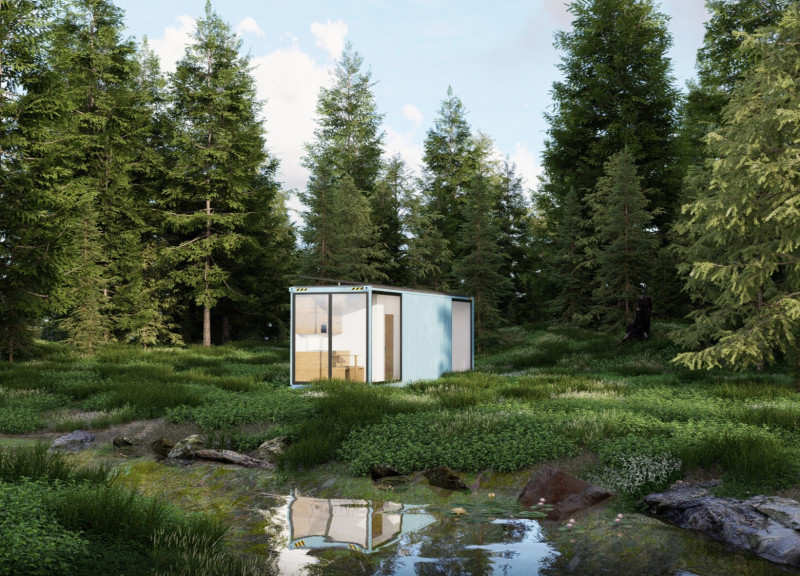5 key facts about this project
At its core, the project serves a dual purpose: it functions as a mixed-use development, accommodating both residential and commercial spaces. This multifaceted approach aligns with current trends in urban planning, where the synergy between living and working is paramount. By combining these elements, the design fosters a vibrant community atmosphere, encouraging interactions among residents and visitors alike. The layout is meticulously planned, with careful consideration given to access, circulation, and the overall experience of individuals within the space.
The architectural design is characterized by its engaging facade, which employs a combination of materials that complement the surrounding environment. The use of locally sourced materials not only enhances the building's sustainability credentials but also ensures a sense of place. Key materials featured in this project include concrete, glass, and timber, all selected for their durability and aesthetic qualities. Concrete provides a robust framework, while large glass panels invite natural light, blurring the boundaries between indoor and outdoor spaces. Timber accents add warmth and texture, creating a welcoming atmosphere throughout the building.
One of the unique design approaches implemented in this project is the incorporation of green spaces. Terraces and rooftop gardens are strategically placed to provide residents and users with access to landscaped areas, promoting well-being and a connection to nature. This design choice is not only visually pleasing but also enhances the environmental performance of the building by improving air quality and supporting biodiversity. Rainwater harvesting systems and energy-efficient appliances further showcase the project's commitment to sustainability, ensuring that it meets modern environmental standards.
The interior layout of the building is designed with flexibility in mind. Spaces are easily adaptable to accommodate different uses, whether it be residential units, community rooms, or commercial offices. This adaptability is a crucial aspect of contemporary architectural design, allowing spaces to evolve over time in response to the changing needs of their occupants. Additionally, thoughtful consideration has been given to acoustics and natural daylighting, ensuring a comfortable and conducive environment for various activities.
The project also reflects a strong commitment to community engagement. Public art installations and interactive spaces invite participation from both residents and passersby, making the building not just a structure but a central part of the urban fabric. This engagement is further enhanced by the incorporation of commercial spaces at the ground level, encouraging foot traffic and creating a lively streetscape.
As the project continues to take shape, it stands as a testament to modern architectural ideas that emphasize connectivity, sustainability, and adaptability. Each element, from the choice of materials to the layout of spaces, aligns with a broader vision of a cohesive urban experience. For those interested in exploring this project further, additional insights can be gained through the examination of architectural plans, sections, and design proposals. Such resources provide valuable perspectives on how the intricate details come together to form a comprehensive architectural narrative. Engaging with these materials will enrich the understanding of the project’s significance within the contemporary architectural discourse.


























